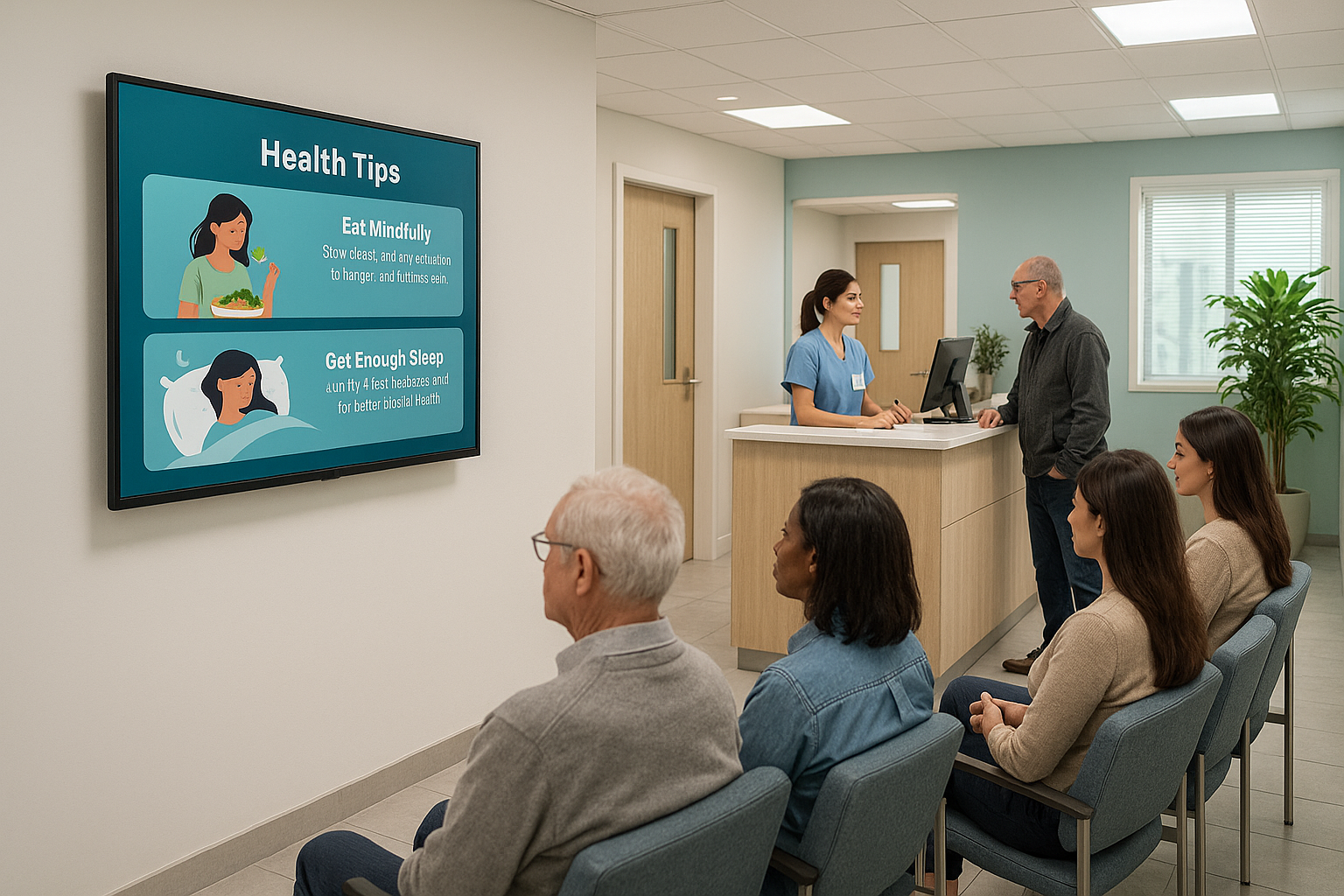Automating Your Clinic's Digital Signage: Save Time with Smart Scheduling

Have you ever rushed into your clinic early to update the display screens before patients arrive? Or stayed late to shut them down? I hear this frustration regularly from clinic managers struggling to manually update their digital signage throughout the day.
Based on our discussions with clinic managers, we understand they used to spend 10-20 minutes each morning setting up displays, then making hurried changes between appointment blocks to show different content. "It just used to be one more thing on my plate," they sighed. "And I'm constantly worried about wasting energy when screens run overnight."
Their story isn't unique. Across countless conversations with healthcare professionals, we've noticed this same pattern: clinic staff stretched thin by administrative tasks that could—and should—be automated.
That's exactly why we built PiSignage's scheduling system with the TV OFF feature. Let us show you how it can give you back those precious minutes every day while ensuring your patients always see the right content.
The Hidden Costs of Traditional Display Management
Let's be honest—managing waiting room screens manually is more complicated than it first appears. Most clinic managers we speak with start with simple USB sticks or basic media players, quickly discovering their limitations.
Traditional methods typically require:
· Physical presence to update content at specific times
· Manual screen power management (often forgotten in busy moments)
· Ad-hoc updates that disrupt workflow
· No reliable way to show different content for different patient groups
One practice manager told us she'd assigned screen management to her front desk staff, but on busy days, content updates were forgotten entirely. Another discovered their screens had been running 24/7 for months, wasting electricity and reducing display lifespan.
What we've observed is that healthcare facilities need content that changes throughout the day—morning wellness tips, afternoon preventative care information, evening health reminders—without requiring staff intervention.
Step-by-Step: Setting Up Automated Clinic Display Scheduling
Here’s how you can set up your clinic's displays to run completely on autopilot:
· Create purpose-specific playlists for each part of your day:
- Morning check-in information (7AM–11AM)
- Midday health education content (11AM–3PM)
- Evening follow-up care instructions (3PM–7PM)
· Set your default playlist to "TV OFF" — a built-in PiSignage feature that powers down screens when not needed
· Schedule specialty playlists by:
- Selecting from the dropdown
- Clicking the schedule icon
- Choosing specific days or clinic blocks
- Setting precise times
· Deploy your schedule once — the system handles all transitions automatically
Here is a video demonstration of how to do this.
Bonus: our scheduling system works at three levels — date ranges, specific days, and times — giving you maximum flexibility for special events or seasonal content.
Real-World Application: A Medical Practice Transformation
Consider a multi-specialty clinic with varied appointment blocks throughout the week. Previously, their administrative coordinator manually changed content four times daily.
With PiSignage, they set up specialized playlists:
· General health info for morning walk-ins
· Cardiac care during Tuesday/Thursday blocks
· Diabetes education for Wednesday afternoons
· Wellness content for Friday senior clinics
They scheduled screens to power down completely from 8PM–6AM and during lunch breaks.
The result?
They saved nearly an hour a week on display tasks. Staff even noticed patients referencing the on-screen content — a clear sign it was finally catching attention.
Benefits Beyond Automated Content
The automation capabilities extend far beyond convenience:
· Energy cost reduction: Screens turn off automatically, cutting energy waste
· Hardware lifespan: Less runtime means longer display life
· Compliance: Schedule HIPAA or safety messages at regular intervals
· Optimized education: Show pediatric info in the morning, chronic care tips in the afternoon
Frequently Asked Questions
1. How do I schedule playlists or content on PiSignage?
You can automate your displays to show different content throughout the day — no manual intervention needed.
2. What hardware is needed to use PiSignage?
PiSignage runs on any Raspberry Pi, smart TV, or even a regular laptop.
· 👉 Full hardware compatibility guide
3. Can I manage displays remotely from anywhere?
Yes. Once set up, you can control, schedule, and update content across screens from any device.
4. What types of content can I display on my clinic's digital signage?
Images, videos, PDFs, web pages, and more.
· 👉 Supported formats and layouts
Ready to Transform Your Clinic’s Digital Signage?
If you're tired of the daily rush to update content or concerned about energy waste, our scheduling system with TV OFF can eliminate these headaches.
Get started with PiSignage for free - manage 2 screens forever, with no hidden fees or expiring trials
The real question is: what could you accomplish with those recovered hours each week?

